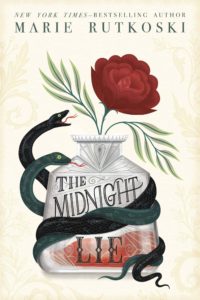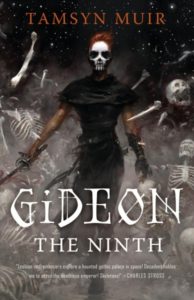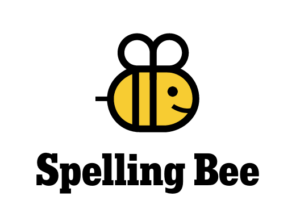All Systems Red
by Martha Wells
[Book]

view/request
A charming story about a heavily weaponized semi-biological robot that calls itself “Murderbot”? Yes! An armed and armored security unit that has hacked its governor-module allowing it to act independently may sound like the terrifying killer robot from a “kill all humans” story from the age of classic sci-fi, but in Martha Wells’ Murderbot Diaries the AI in question is an awkward and kind-hearted, if incredibly sarcastic and anti-social, hero of an extended coming-of-age story. Murderbot just wants to be left alone to enjoy its favorite serials on the entertainment feed, but life keeps getting in the way and in the process Murderbot grows as a person, forming relationships and learning more about what it means to be alive than it could ever know from The Rise and Fall of Sanctuary Moon or Timestream Defenders Orion.
The series begins with All Systems Red, a short novella that introduces Murderbot and some of the key humans who will play a part in its life. The series continues with Artificial Condition and is now a series of six books, with more on the way. Highly recommended.
Reviewed by Ben
Tagged: Action, Coming-of-age, Fiction, Humor, Science fiction
The 99% Invisible City: A Field Guide to the Hidden World of Everyday Design
by Roman Mars and Kurt Kohlstedt
[Book]

view/request
If you are interested in the world around you—what are those little boxes on the sides of buildings? why are signposts built the way they are? what do those symbols painted on the road mean?—then 99% Invisible will appeal to you. Faith has already written up the 99% Invisible Podcast as a staff pick here, but I would like to bring your attention to the book, The 99% Invisible City. The book, as its title implies, has a narrower scope than the podcast, and concentrates on the urban environment. I highly recommend it for anyone who has enjoyed episodes of the podcast or has heard about it and been intrigued but never given it a listen. Nearly all of the topics in the book have been extensively covered on the podcast, so you will actually get more out of this if you are not yet a diehard 99pi fan, though longtime listeners will certainly find it an entertaining review.
This is a great book for whetting your appetite—each topic is covered only briefly, and you will want to learn more! Perhaps its greatest deficit is the lack of photographs—the illustrations are charming, but more often than not you will want to see photographs of what has been described. If you are anything like me you will take note of those stories that intrigue you most and continue to investigate them further on your own—which is, I suspect, exactly what Roman Mars and Kurt Kohlstedt want!
Reviewed by Ben
Tagged: Design, Non-fiction
The Midnight Lie
by Marie Rutkoski
[Book]

view/request
This YA fantasy novel is the first in a duology about Nirrim, a young woman who lives in a remote island city. Nirrim is Half Kith, which means she cannot wear bright colors, eat flavorful food, or leave the walled-in neighborhood she calls home. Beyond the walls, the privileged class known as the High Kith live lavishly. When an unlucky accident lands Nirrim in the city jail, she meets Sid, a traveler with a mysterious past who somehow convinces the guards to let Nirrim free. Sid has questions Nirrim never thought to ask, like: why do the High Kith get all of life’s pleasures? How was the city founded? And who built the wall around the Half Kith? Together, Nirrim and Sid set out to find the answers.
Though this plot description has elements that will be familiar to anyone who reads YA fantasy and dystopian sci-fi, I found it to be a unique and engrossing story that isn’t quite like anything I’ve read before. The island of Herrath, where Nirrim lives, is immersive and detailed, and Marie Rutkoski’s writing brings it vividly to life. The primary romance in this book is between two women, and the characters feel well-developed and real. I picked this book up on a whim one Sunday morning and didn’t put it down until it was finished–it totally hooked me from the first few pages. Highly recommended to teens and adults who love complicated heroes, LGBTQ romance, and unique fantasy worlds.
Reviewed by Madison
Tagged: Dystopia, Fantasy, Fiction, LGBTQ, Romance
Gideon the Ninth
by Tamsyn Muir
[Book]

view/request
Gideon the Ninth is a dark fantasy. The world in which it is set seems to be the decaying remanent of a once prosperous interplanetary empire, but don’t let the occasional space ship fool you—this isn’t science fiction and the physics of this world are very different from our own in one notable way: some individuals are born with necromantic abilities and can learn to manipulate, blood, bone, and even the souls of the dead. This would be unbearably dark and gruesome were it not for a few things:
- Our protagonist, Gideon, is strong, queer, contrary, and absolutely hilarious. Despite all her complexities and her own dark past it is her irreverence that keeps the book from being too dark.
- The relationships are complex and intriguing. It quickly becomes clear that while Gideon may put on a show of hating everyone and everything, in actuality her feelings are rarely so simple. It should be noted that some of the relationships portrayed in this book seem deeply unhealthy—but they are also interesting and too believable to be simply dismissed.
- There is a murder mystery—with a small closed circle of suspects, mostly unknown to each other, and all brought together by unsolicited invitations we are treated to a peculiarly mystery that has something of the feel of a classic country house mystery, just with more skeletons and swordfighting.
- The book is full of details that make its world feel much larger than what is revealed. We might suppose that Gideon and her companions have some idea of the history of the once prosperous empire, but it is clear that even their understanding is incomplete and the reader is left to imagine what might have happened. And when it comes to understanding necromancy, we get a glimpse here and there of the complex rules that seem to govern it, but we soon see that even those in the book that profess to understand it best have much to learn.
- Finally, a word must be put in about the swordfighting. Very early in the book we learn that Gideon is very proficient with a two-handed longsword, but circumstances will requirer her to play the part of a cavalier, convincing her audience that she has always trained with a rapier. Muir could easily have left it at that, but she clearly did her homework, and it shows in every mention tactics, posture, and training. These descriptions of swordwork feel real and they serve to ground the fantasy.
So, yeah. I kind of loved this book. It is crass, violent, and excessively gory, but its also good, for all the reasons I gave above and probably for many more I’m not clever enough to put my finger on. This is definitely not the right book for everyone, but if the above sounds appealing, I urge you to give it a try.
Reviewed by Ben
Tagged: Fantasy, Fiction, Humor, LGBTQ
Levar Burton Reads
by Levar Burton
[Online Resource]

view/request
Levar Burton’s podcast has a tagline that embraces superlatives: “The Best Short Fiction, Handpicked by the Best Voice in Podcasting”. That may be taking things a bit far, but I am loving the stories Levar picks, and I can’t think of anyone I would rather hear read them. Perhaps that’s because I grew up on Reading Rainbow, but whatever your generation, if you enjoy short fiction read allowed, I urge you to check out Levar Burton Reads.
The podcast is impeccably produced, with sparing use of subtle soundscapes that enhance the storytelling. The stories are mostly science fiction and fantasy, but the selections are always of an accessible sort—you don’t need to be a fan of these genres to appreciate these well-told tales. And the authors are diverse, including both classic well-established writers and new writers of all races and genders. Levar always takes a brief moment to tell you about why he selected the story and what it means to him, and I invariably find I appreciate what he has to say.
So, whether you are looking for new authors and ideas, some great bed time stories, an impeccably produced podcast, or just the comfort of hearing Levar’s voice, give it a listen.
Reviewed by Ben
Tagged: Fantasy, Fiction, Podcast, Science fiction, Short stories
Stay On It
by Julius Eastman
[Online Resource]

view/request
Composer Julius Eastman’s (1940 – 1990) music explores his identities as a gay man and Black American. Stay On It was composed in 1973 and combines minimalism with pop music. This new performance, which features musicains and dancers collaborating remotely, is dedicated to essential workers of color in the United States.
I found out about this performance through one of the many organizations involved in its production: The Dream Unfinished. The Dream Unfinished is an activist orchestra based out of New York which uses classical music as a platform to engage audiences in dialogues surrounding social and racial justice.
Reviewed by Ben
Tagged: Classical music, Music, Pop music, Racism

view/request
Board Game Arena advertises itself as “the world’s largest online board gaming community”. It is a community built and run online game platform with over 150 games, from classics like Hearts and Chess to more modern games like Sushi Go and Carcassonne. You can play with friends (playing with friends while on a simultaneous video chat is the closest I’ve come to a board game night during quarantine) or with strangers. On my own I’ve been playing lots of Race for the Galaxy, Hearts, and Seven Wonders. With friends we’ve played Sushi Go and Can’t Stop. It’s a good time. I recommend it for anyone who would like to play board games with friends during quarantine or anyone wants to satisfy a board game itch when an in person game isn’t possible.
Reviewed by Ben
Tagged: Board games, Game
Spelling Bee
by The New York Times
[Online Resource]

view/request
Like most librarians, I love words and games that involve language. This new one from the New York Times challenges you to come up with as many words as you can using just the 7 letters they provide. You can play it in fits and starts and it’ll track your progress throughout the day, making it very user-friendly during this strange, interruption-filled and routine-free time we’re currently living in. And lest you become too impressed with yourself, Spelling Bee has a rating system, from “Beginner” to “Genius”, to put you in your place.
Reviewed by Sarah
Tagged: Game
Ian’s Shoelace Site
by Ian Fieggen
[Online Resource]

view/request
Sometimes its nice to dive into a seemingly trivial subject and learn what there is to learn. Shoelaces for example. We tie and untie them everyday, but what do we know about them? For most folks, the answer is not much. What is there to know about them? A fair amount, it turns out, and Ian Fieggen has provide a website (Ian’s Shoelace Site) that answers the questions you didn’t think to ask. The deepest and richest sections are, without a doubt, the sections on shoelace tying and shoe lacing. You can learn sixty-two different ways to lace shoes and the comparative advantages and disadvantages of each. And you can learn twenty different ways to tie your laces. Fieggen’s instructions are clear and the amount of detailed information he includes for each method is impressive. This is definitely the site to go to if you have a question about shoe laces, but it also highly recommended for anyone who likes to learn about the little things around us.
Reviewed by Ben
Online Etymology Dictionary
by Douglas Harper
[Online Resource]

view/request
Dan Harper’s Online Etymology Dictionary is one of those reference sources that is both useful and a pleasure to use. It’s primary content is, of course, dictionary entries for English words with a focus on their history. For example we will learn that the word “pet” is of unknown origin and meant “a tamed animal” until about the 16th century when it gained the meanings “animal kept as a favorite” and “indulged child”. By the 1620s it was in use as a verb meaning “to treat as a pet”, but it didn’t gain its meaning of “to stroke” until 1818! The entries in Harper’s dictionary are concise and thoughtful. Sources are rarely given, which limits its use for scholarship, but the brevity achieved makes in perfect for quick reference and pleasure reading.
In addition to the dictionary entries, the website also includes articles on various related topics, most recently Language in a Time of Corona, which digresses on themes suggested by the history of the various words in common use, including: “crisis” (which curiously evolved from a word meaning “sieve”), “epidemic” (a noun with an adjective’s ending), “virus” (a word that predates it’s current meaning by many centuries), “quarantine” (which originally referred to policy of isolating a ship for forty days), and many others.
Reviewed by Ben
Stuff You Should Know
by Josh Clark and Charles W.
[Online Resource]

view/request
It can be a challenge to find a podcast that is very educational and informative, and at the same time is really funny. It can also be a challenge to find a podcast that appeals to the older and younger generations. Stuff You Should Know is a free podcast that fits the bill.
The podcast is hosted two good friends, hosted by Josh Clark and Charles W. “Chuck” Bryant, both writers at HowStuffWorks. Each adds their own charming, clever, and sometimes serious take on a wide variety of issues. Thousands of episodes are available on this weekly podcast that started in 2008.
Check out this sampling of topics from 2017:
- How Dictators Work
- Are Artificial Sweeteners Really Bad for You?
- How Pacifism Works (and could it?)
- The Black Panther Party
- Pain Scales – Yeeow!
- Why Isn’t the US on the Metric System?
- How Foreign Accent Syndrome Works
- Is A Head Transplant a Real Thing?
Most of the podcasts are an hour, but Chuck and Josh offer short segments as well. Check it out On iHeartRadio or wherever you go for Podcasts. You’ll have a lot more fun on your exercycle and even learn a few things.
Reviewed by Rachael
Tagged: Educational, Podcast

view/request
The Valley Advocate Sessions is presented by the Valley Advocate, Signature Sounds, and Northampton Open Media and regularly features short concerts by local musicians both seasoned and new. A recent contributor was Henning Ohlenbusch, who has been featured in our staff picks before and was one of Forbes Library’s 2018 Musicians in Residence.
Reviewed by Lisa
Tagged: Music, Northampton












